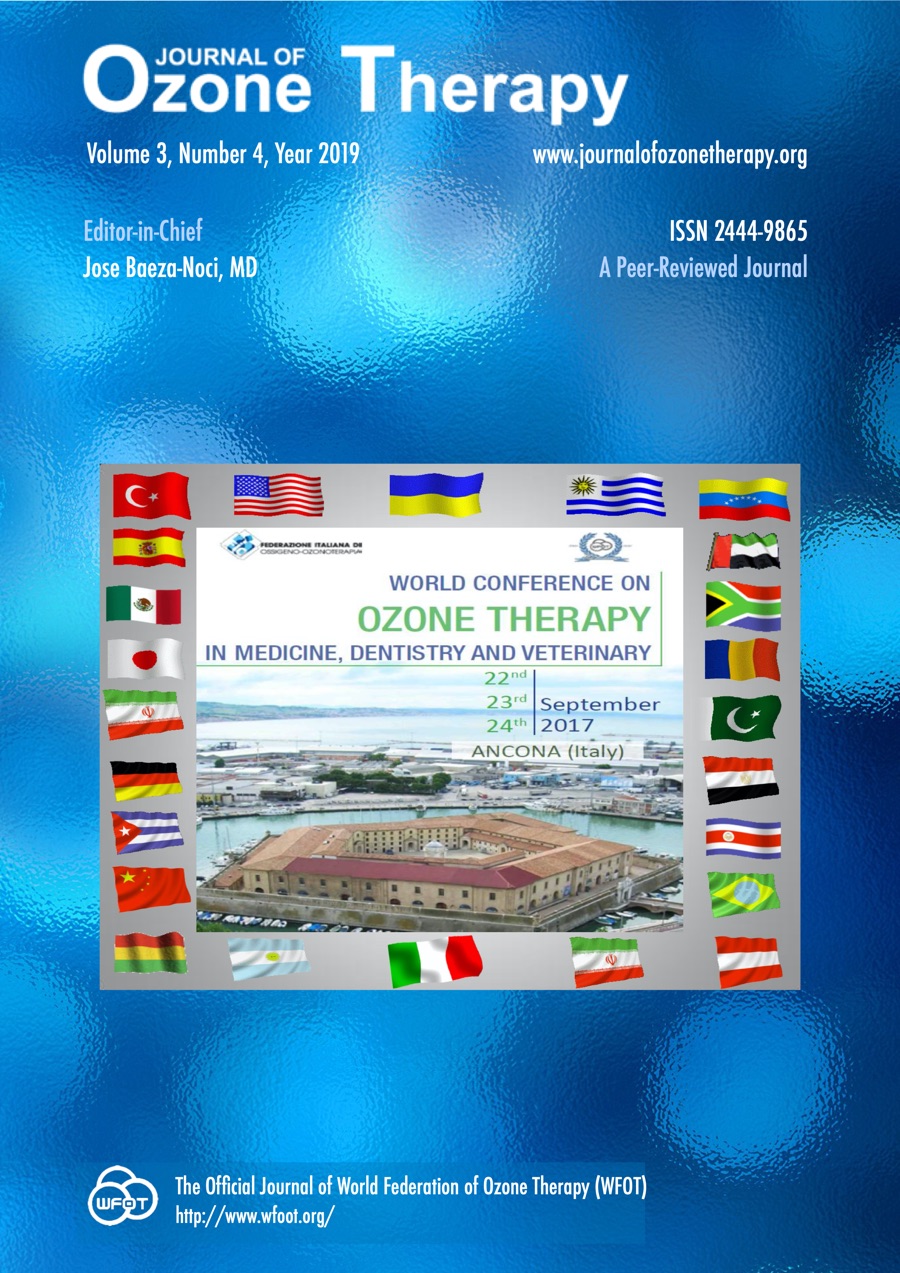Ozone mechanism of action on herniated disc: clinical and instrumental data abstract]
DOI:
https://doi.org/10.7203/jo3t.3.4.2019.15393Keywords:
disc herniation, ozone injections Abstract
Abstract
PURPOSE: Recently, O2O3 has been successfully used in the treatment of Low Back Pain, reducing pain after the failure of other conservative treatments. Majority of LBP patients are affected by disc herniation (DH). O2O3 can stop pain caused by the Intervertebral Disc Degeneration (IDD), associated or not to extrusions of nucleus pulpous, causing inflammatory changes.
Our primary purpose is to understand how ozone affects IDD.
MATERIAL AND METHODS: Bilateral intramuscular O2O3 infiltrations, injected on the disk lesion with a paravertebral approach. An O2O3 mixture at a rate of 20 mcgr/mL was obtained by means of an ozone generator.
RESULTS: A good reduction of pain and a significant improvement of life quality was obtained in patients with IDD treated with intramuscular infiltrations of O2O3.
O2O3 therapy restricts production of pro-inflammatory substances from hernia, which are responsible for the painful symptoms and functional impairments.
DISCUSSION: Contrary to popular knowledge, painful symptoms improvements are as a result of loss of bio-humoral inflammation factors and not the reduction of mechanical nerve pressure.
CONCLUSION: The action of O2O3 is performed in a developed fibrous tissue in the disc herniation. This would prevent the production of pro inflammatory substances by the hernia itself, thus explaining the disappearance of the painful symptoms in the absence of volumetric
reduction of the hernia. It is also shown by the persistence of the mechanical pressure on the nerve notwithstanding the disappearance of the inflammation and pain symptoms.
 Downloads
Downloads
Downloads
Published
How to Cite
-
Abstract791
-
PDF386
Issue
Section
License
Journal of Ozone Therapy applies the Creative Commons Attribution-NonCommercial 4.0 International License (CC BY NC 4.0) license to works we publish.
Under this license, authors retain ownership of the copyright for their content, but allow anyone to download, reuse, reprint, modify, distribute and/or copy the content as long as the original authors and source are cited. No permission is required from the authors or the publishers.
You may not use the material for commercial purposes.
Appropriate attribution can be provided by simply citing the original article, provide a link to the license, and indicate if changes were made.
You may do so in any reasonable manner, but not in any way that suggests the licensor endorses you or your use.




